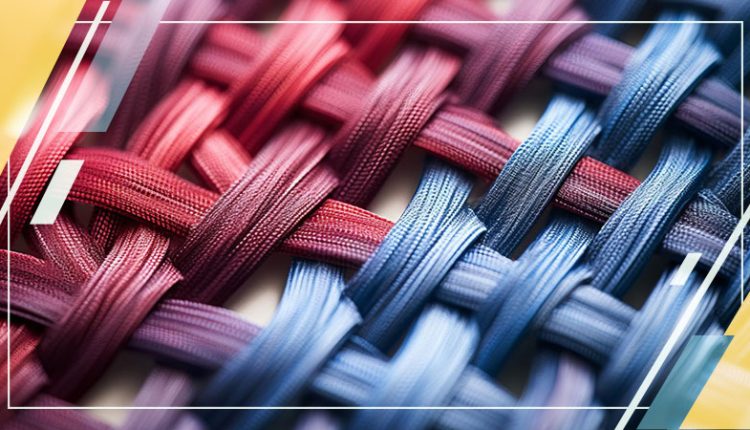Fiberglass yarn is a fascinating material that finds applications in numerous industries, thanks to its unique properties and versatility. In this blog post, we will explore more about it, discuss its characteristics, delve into its advantages and disadvantages, examine its various applications and use cases, and explore the prospects of this remarkable material.
What is Fiberglass Yarn?
Fiberglass yarn is made by waste glass or melting glass balls at high temperatures and then going through processes like wire drawing, winding, weaving, and more. It’s mainly used for electrical insulation, as an industrial filter, and for its properties like corrosion resistance, moisture protection, heat insulation, soundproofing, and shock absorption. It’s also used as a reinforcement material in making fiberglass-reinforced plastic products, such as reinforced plastic or reinforced gypsum. When fiberglass is coated with organic materials, it becomes more flexible, which makes it great for things like packaging cloths, window screens, wall coverings, protective clothing, and materials for electrical and sound insulation.
Some prominent fiberglass yarn manufacturers include Bright Glass Yarn, Blue Water, and Sunbow Vinyl Coated Fiberglass Yarn.
What Are the Characteristics of Fiberglass Yarn as a Reinforcing Material?
- High tensile strength: It has high tensile strength and low elongation (3%).
- High elastic coefficient: It features a high elastic coefficient and good rigidity.
- Impact energy absorption: Within the elastic limit, it has a large amount of elongation and high tensile strength, allowing it to absorb significant impact energy.
- Non-flammable: As an inorganic fiber, fiberglass is non-flammable and exhibits good chemical resistance.
- Low water absorption: It has low water absorption properties.
- Dimensional stability and heat resistance: It offers excellent dimensional stability and heat resistance.
- Good processability: It can be processed into various forms, such as strands, bundles, felts, and woven fabrics.
- Transparency: It is transparent and permeable to light.
- Surface treatment compatibility: The development of a surface treatment agent enhances its adhesion to resin.
- Cost-effective: It is relatively inexpensive.
- Heat resistance: It is resistant to burning and can be melted into glass beads at high temperatures.
Advantages of Fiberglass Yarn
- Versatility: It can be used in a wide range of applications, including textiles, composites, insulation, and reinforcement in various industries such as automotive, construction, aerospace, and marine.
- Dimensional Stability: It maintains its shape and dimensions, even under extreme conditions, ensuring long-term structural integrity.
- Resistance to Moisture: This yarn does not absorb moisture, making it resistant to rot, mildew, and degradation caused by water exposure.
- Cost-effective: It is often more cost-effective compared to other high-performance materials, offering a balance between performance and affordability.
- Excellent Dielectric Properties: Its electrical insulation properties make yarn an ideal choice for applications requiring protection against electrical currents.
Disadvantages of Fiberglass Yarn
- Handling Precautions: Due to its microscopic glass fibers, it can cause skin irritation. Proper safety measures, including the use of gloves and protective clothing, are necessary while working with this material.
- Brittleness: Although this yarn is strong, it can be brittle, especially in applications subjected to frequent bending or flexing, which can lead to fiber breakage.
Applications and Use Cases
- Textiles: It is used in the production of fabrics for applications such as thermal insulation, fire-resistant clothing, and reinforcement in composites.
- Construction: It is employed in the production of fiberglass-reinforced polymer (FRP) composites used in structural elements like beams, columns, and panels, offering strength and corrosion resistance.
- Automotive Industry: It is utilized in the manufacturing of lightweight composite parts, such as body panels, interior components, and reinforcement for various automotive applications.
- Electrical and Electronics: Due to its excellent electrical insulation properties, it is used in the production of electrical insulation tapes, printed circuit boards, and electrical cables.
- Aerospace and Marine: It finds applications in the aerospace and marine industries, including the production of aircraft components, boat hulls, and insulation for pipes and vessels.
Future Prospects of Fiberglass Yarn
The future outlook for these yarns appears promising based on several key insights. Firstly, market growth and demand for yarn are expected to rise in the coming years due to increased consumer demand, technological advancements, and favorable economic conditions. Their versatility and unique properties make it an attractive choice for a wide range of applications, contributing to its expanding market presence.
Secondly, emerging trends and innovations in the fiberglass industry are continually enhancing the performance and capabilities of fiberglass yarn. Ongoing research and development efforts are focused on improving fiber strength and durability, which are expected to drive future growth. The industry is also seeing strategic collaborations, consolidations, and takeovers that lead to the development of new products, improved manufacturing techniques, and an expanded market reach.
Lastly, growing applications and technological advancements are further boosting the market potential. It is used in various industries, including textiles, construction, automotive, aerospace, and electrical and electronics. As these industries evolve, the demand for these yarn is likely to increase, especially with the automotive industry’s shift towards lightweight materials. Additionally, advancements in manufacturing technologies, such as better fiber alignment and resin impregnation techniques, and a focus on environmental sustainability through eco-friendly processes and recycled materials, are paving the way for new applications and market expansion.
Bottom Line
Fiberglass yarn is a remarkable material with diverse applications across multiple industries. Its strength, durability, heat resistance, and electrical insulation properties make it an attractive choice for a wide range of uses. While it has some disadvantages, proper handling and precautions can overcome these challenges.


